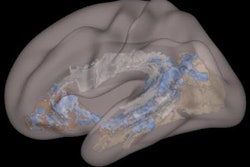Friday, December 6 | 11:50 a.m.-12:00 p.m. | SST04-09 | Room E350
Adding the Vesical Imaging-Reporting and Data System (VI-RADS) to multiparametric MRI (mpMRI) scans could be a boon for evaluating bladder cancer.In this presentation, Dr. Martina Pecoraro, a radiology resident at Sapienza University of Rome, will detail how researchers sought to determine interobserver agreement and diagnostic accuracy for mpMRI with VI-RADS to distinguish nonmuscle-invasive bladder cancer from muscle-invasive bladder cancer.
Over 18 months, Pecoraro and colleagues analyzed 126 patients who were referred for suspected bladder cancer. The subjects underwent mpMRI scans of the bladder before transurethral resection of the bladder tumor. Two radiologists evaluated the mpMRI results using VI-RADS to rate each lesion. From there, they calculated sensitivity, specificity, positive predictive value (PPV), and negative predictive value (NPV) for each VI-RADS cutoff.
Using a VI-RADS cutoff of greater than 2 to define nonmuscle-invasive bladder cancer, the readers achieved sensitivity ranging from 86% to 93% and specificity from 85% to 91%. Using the same VI-RADS parameter, PPV ranged from 75% to 81% and NPV from 94% to 97%.
When the VI-RADS cutoff was raised to greater than 3, sensitivity dipped slightly to 79% to 84%, while specificity increased to 91% to 95%. Meanwhile, PPV ranged from 79% to 85%, with an NPV of 92% for both readers.
The combination of MRI with VI-RADS at the optimal cutoff of more than 2 can differentiate between nonmuscle-invasive bladder cancer and muscle-invasive bladder cancer with overall good interreader agreement. Most importantly, the strategy could help improve patient care, the group concluded.



.fFmgij6Hin.png?auto=compress%2Cformat&fit=crop&h=100&q=70&w=100)




.fFmgij6Hin.png?auto=compress%2Cformat&fit=crop&h=167&q=70&w=250)











